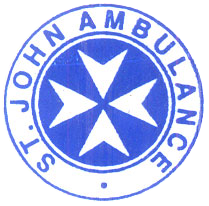PROCEDURES
Preparing the casualty for AED
Before applying the defibrillation pads onto the casualty:
a. Expose the casualty’s chest adequately.
b. If the casualty is wearing jewellery or any accessories that is resting on his
chest, remove it or push it aside to expose the site for the defibrillation pads.
c. Look for and remove any patches (e.g. medicated patch) from the casualty’s
chest if these patches interfere with the placement of the defibrillation pads.
d. Shave excessive hair from the casualty’s chest where the defibrillation pads are
going to be placed to improve adhesion.
e. Clean and dry perspiration off the chest as the moisture can reduce the contact
of the defibrillation pads to the chest.
f. If there are any pacemakers, place the defibrillation pads a space of four fingers
wide away from them. In the meantime, ensure that good quality CPR is in
progress.
Applying the defibrillation pads
After ensuring that there are no contraindications and that the casualty is prepared,
the AED operator may proceed with the application of the defibrillation pads while
CPR is in progress. Do not interrupt the chest compressions and mouth-to-mouth
ventilations.
Continue with CPR while the pads are being applied.
To apply the defibrillation pads:
a. Check the expiry date on the packet.
b. Remove pads from the packet and peel off the protective
backing.
c. Place one pad vertically on the right breastbone just below
the collarbone.
d. Place the other pad horizontally, one palm below the left
armpit, towards the middle of the chest region. Refer to the
illustration for the placement of defibrillation pads.
e. Make sure the pads are properly pasted with no air pockets.
f. Turn on the AED device.
g. Follow the AED’s voice prompted instructions and perform CPR as required
until the casualty shows signs of life or the ambulance crew arrives.
Once the casualty shows signs of life
a. Check for breathing.
b. If the casualty is not breathing, continue CPR and AED.
c. If the casualty is breathing, monitor his breathing constantly until the ambulance
CONTACT US:
ST.JOHN AMBULANCE
No.714, 1st Floor, MTH Road, Mannurpet,Padi, Chennai – 600050. Ph: 044-26242318.
Cell: 8056079747, 9840799786Email: stjohn77@yahoo.co.in,
Cell: 8056079747, 9840799786Email: stjohn77@yahoo.co.in,
stjohnambattur@gmail.com
stjohnambulancepadi@gmail.com
